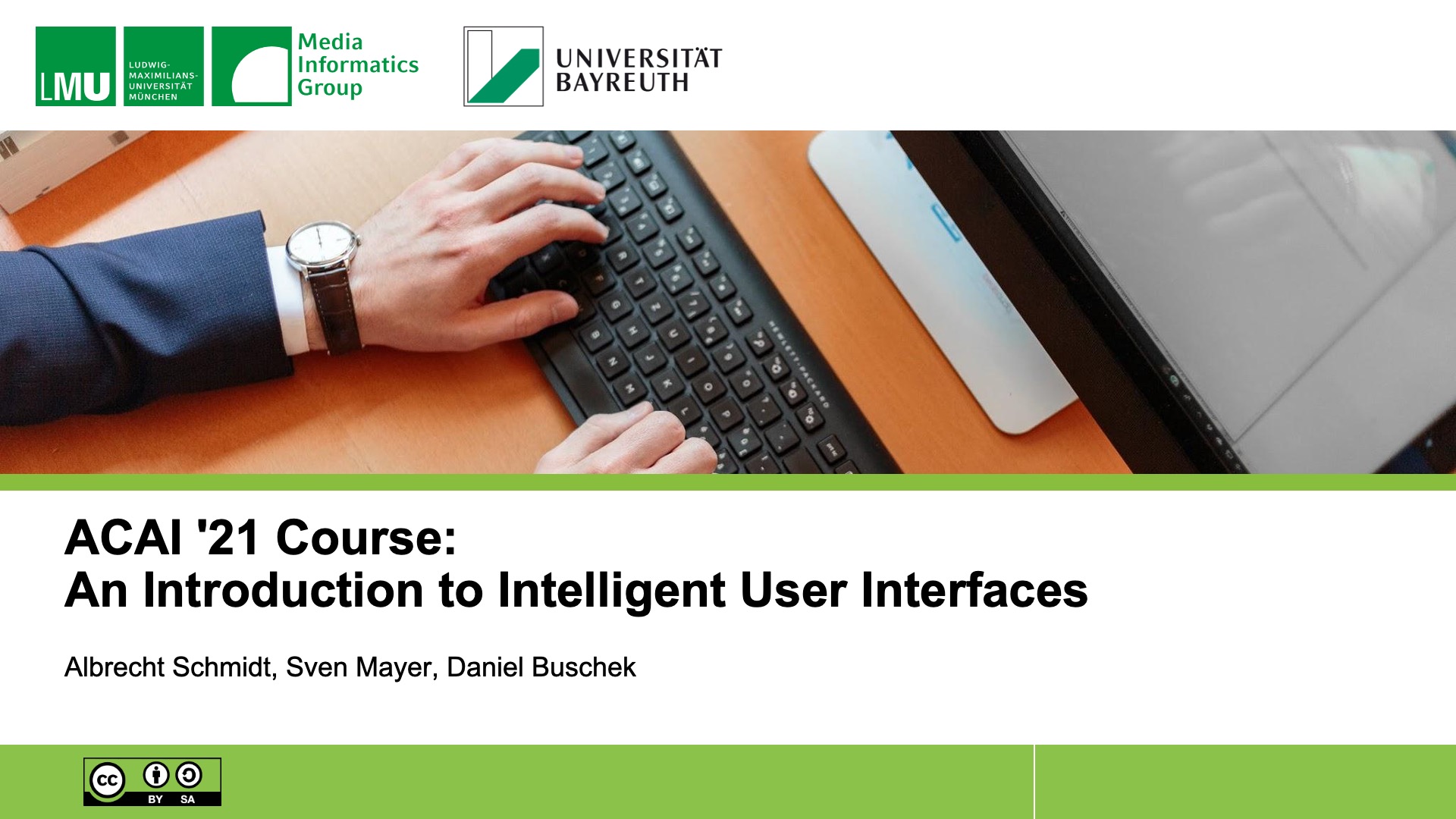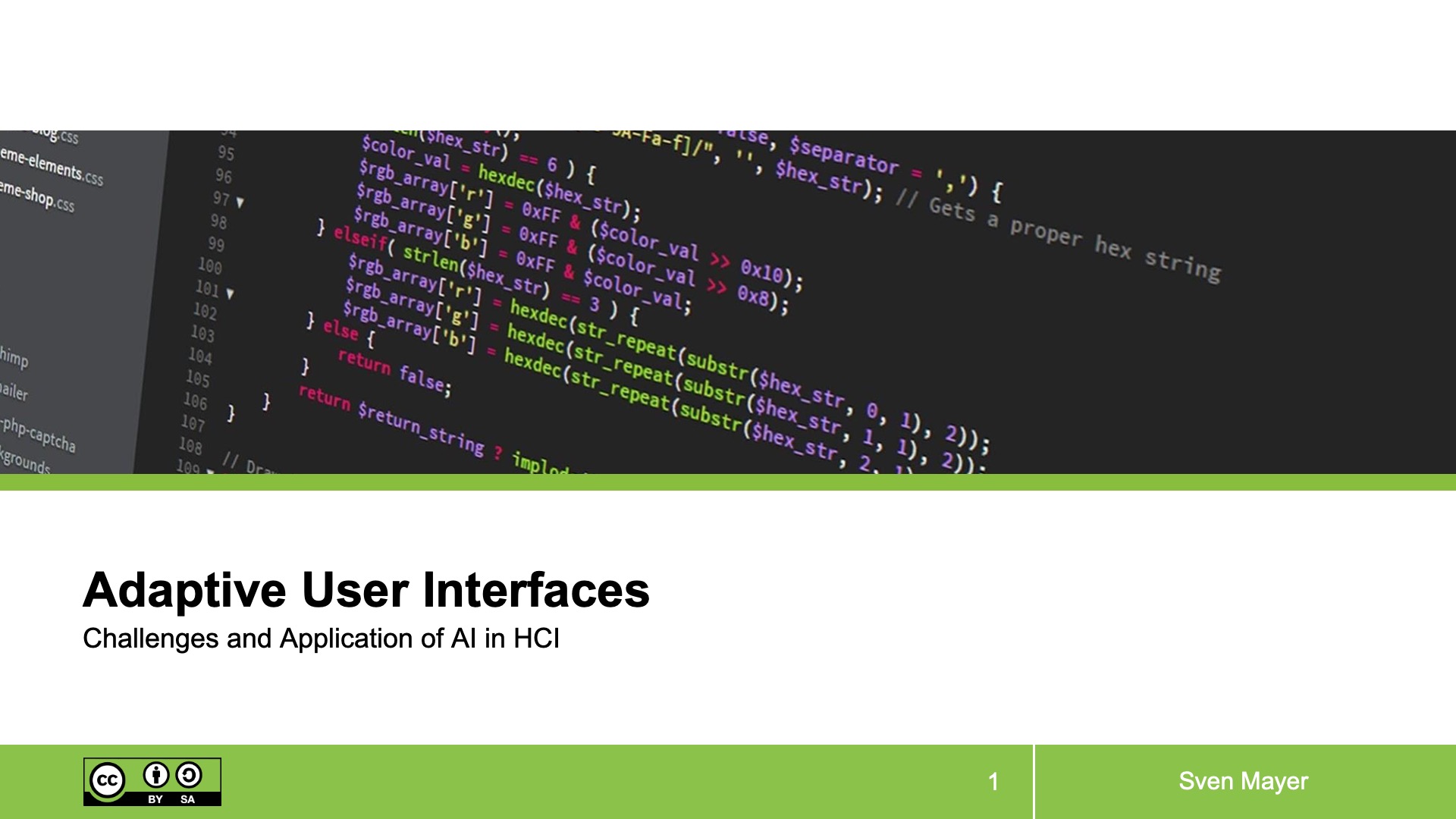ACAI 2021: Intelligent User Interfaces and Interactive Artificial Intelligence
This course is held by Albrecht Schmidt (LMU Munich), Sven Mayer (LMU Munich), and Daniel Buschek (University of Bayreuth).
Recent advancements in artificial intelligence (AI) create new opportunities for implementing a wide range of intelligent user interfaces. Speech-based interfaces, chatbots, visual recognition of users and objects, recommender systems, and adaptive user interfaces are examples that have majored over the last 10 years due to new approaches in machine learning (ML). Modern ML-techniques outperform in many domains of previous approaches and enable new applications. Today, it is possible to run models efficiently on various devices, including PCs, smartphones, and embedded systems. Leveraging the potential of artificial intelligence and combining them with human-computer interaction approaches allows developing intelligent user interfaces supporting users better than ever before.
In the tutorial we will discuss how to design, develop, and implement intelligent user interfaces and how to create interactive AI Systems. We address the fundamental question, of how to keep the human in the loop with intelligent systems and how joint control can be realized. We give concrete examples in the areas of recommender systems and user interface adaptation. Multimodality and in particular natural language based interaction in the context of bots will be a further topics. We show how optimization using ML-techniques can be used to optimize intelligent text input, in particular for mobile devices as well as to improve the overall user experience. In the final part we discuss how physicality and artificial intelligence are linked, when creating smart objects and environments.
Sections in the tutorial:
- Human in the loop – Designing for joint control
- A new Interaction Paradigm: From continuous interaction to intervention user interfaces
- How to build recommender systems that work? Why is Netflix not suggesting the movies I really like?
- Using optimization and ML to improve text input and user interfaces
- Smart Conversational Interfaces: Natural Language Interaction and Bots
- Creating smart objects and intelligent environments
- Human Centered Interactive AI - How can we implement this?
Part 01: Overview of AI and ML Terms, Concepts and Tools

Lecture Slides [Powerpoint PPTX file], [PDF file]
Part 02: Adaptive User Interfaces - Challenges and Applications of AI in HCI

Lecture Slides [Powerpoint PPTX file], [PDF file]
Instructors:

Albrecht Schmidt
Albrecht Schmidt is a full professor for Human Centered Ubiquitous Media in the Computer Science Department at LMU Munich. The focus of his work is on novel user interfaces to enhance and amplify human cognition. He is working on interaction techniques and intelligent interactive systems in the context of ubiquitous computing. In 2018 he was elected to the ACM CHI Academy.

Sven Mayer
Sven Mayer is an assistant professor for HCI at the LMU Munich. Prior to that, he was a postdoctoral researcher at the Carnegie Mellon University in the Future Interfaces Group and received his Ph.D. from the University of Stuttgart in 2018. He uses machine learning tools to design, build, and evaluate future human-centered interfaces in his research. This allows him to focus on hand- and body-aware interactions in contexts, such as mobile scenarios, augmented and virtual reality, and large displays.

Daniel Buschek
Daniel Buschek leads a junior research group at the intersection of Human-Computer Interaction and Machine Learning / Artificial Intelligence at the University of Bayreuth, Germany. Previously, he worked at the Media Informatics Group at LMU Munich, where he had also completed his doctoral studies, including research stays at the University of Glasgow, UK, and Aalto University, Helsinki. In his research, he combines HCI and AI to create user interfaces that enable people to use digital technology in more effective, efficient, expressive, explainable, and secure ways.